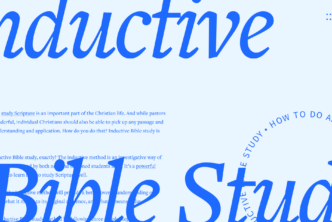The last week of Jesus’ ministry, often called Passion Week, was packed with action—powerful teaching, bold confrontation, intrigue, and prophecy both fulfilled and made anew. Explore it all with the free Faithlife Study Bible app.
Passion Week begins when Jesus rides into the Jerusalem on a donkey to the adulation and cries of, “Hosanna! Blessed is he who comes in the name of the Lord!” The account is recorded in several different places in Scripture, but the most detailed is found in Matthew 21:1–11. The study notes accompanying that passage include a detailed and visually interesting infographic.
In this one event, Jesus fulfilled a number of Old Testament prophecies about the Messiah, something he did no less than 68 times in his life. This chart details each of them.
Jesus found many opportunities to preach throughout Passion Week. The Parable of the Two Sons (Matthew 21:28–32), Parable of the Tenants (Matthew 21:33–45), Parable of the Wedding Feast (Matthew 22:1–14), The Great Commandment (Matthew 22:34–40), and the Seven Woes to the Scribes and Pharisees (Matthew 23:1–36). And whenever Jesus taught, the religious leaders were close by to challenge him. One of their Passion Week challenges came in the form of a trick question about taxes, intended to trap Jesus. The Pharisees asked him if it was lawful to pay Roman taxes—a clever question because whether Jesus answered yes or no, the answer could be used against him. Jesus managed to answer without giving them the ammunition they anticipated.
The Faithlife Study Bible notes explain: “Jesus both settles the matter and avoids incriminating Himself. The coin had Caesar’s image and title on it, and therefore by extension, belonged to Caesar—it was his currency. However, if Caesar got his due, God should likewise receive His due—the whole earth is His and everything in it (Psalm 24:1). What they were required to give God was of far greater worth than a coin—their entire lives. The currency of the kingdom of God is based on following Christ.” The Faithlife Study Bible also includes this great image so we can visualize the coin in question.
After this, the religious leaders in Israel began making plans to kill Jesus. Scripture uses a unique word to describe their actions—dolos. It means deceitful, underhanded, or treacherous. The FSB’s study notes point it out and suggest that Matthew used it to contrast Jesus’ innocence and righteousness. I also see a link to A Greek–English Lexicon of the New Testament, since I have that book in my Logos library (don’t forget that books you get on Logos.com network automatically with your other resources to make them more powerful). The last night of Jesus’ ministry was spent with his disciples celebrating the Jewish holiday of Passover. He instituted our New Testament observance of communion in the midst of the Passover celebration. Afterward, Jesus and his disciples walked from the city to pray in the Garden of Gethsemane, where he would be arrested later that evening. We sent a video-production team to Israel to capture images and video of important locations like this. You can take a virtual stroll through the garden in the study notes on Matthew 26:36.
Judas Iscariot, one of Jesus’ disciples, led his enemies to the garden where they could arrest him in secret. Ten of the disciples fled, but Peter jumped to his defense, wounding a servant of the High Priest. Jesus intervened, reminding him that the armies of heaven stood ready to defend them all, but he chose not to call on them. The religious leaders of Israel bribed witnesses to accuse him in a secret trial held in the council chamber. The Faithlife Study Bible includes this image, helping you imagine the setting.
They found him guilty, but lacked the authority to carry out the death sentence they sought, so they brought Jesus to appear before Pontius Pilate, the Roman Prefect in Jerusalem. For years, Scripture was the only record of Pilate. Many skeptics denied his existence until an inscription was uncovered by Robert Bull in 1982. With this archaeological discovery, the details of the biblical narrative were once again confirmed accurate.
Though Pilate did not want to order Jesus’ execution at first, eventually he succumbed to the public pressure whipped up by the religious leaders. Jesus was crucified outside the city walls at a place called Golgotha, which means “place of the skull.” Protestant archaeologists in the nineteenth century identified this hill as the most likely spot because its location fits the biblical description and the rock formation does resemble a skull. The Faithlife Study Bible includes this image.
If the story ended there, we probably would not know it today. But of course, Jesus did not stay dead. Three days after his execution, two women traveled to his tomb to pay their respects and felt an earthquake beneath them. When they arrived at the tomb, they found it empty. An angel told them not to fear, because Jesus had risen from the dead. The account is recorded in Matthew 28, and the Faithlife Study Bible puts it this way:
This chapter contains the most important event in human history: the resurrection of Jesus the Messiah from the dead. In fulfillment of his prediction, He conquers the grave and rises again to life.
So we celebrate, once a week on Sunday and once a year on Easter, the victory that Jesus won over death, hell, and the grave. He is risen. He is risen indeed.
To explore Passion Week and the rest of Scripture in a new way, download the free Faithlife Study Bible on your smartphone or tablet today.




